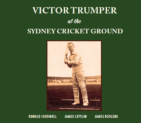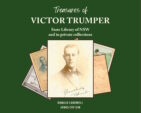The Elevens of England
Archie Mac |Published: 1988
Pages: 190
Author: West, G Derek
Publisher: Darf Publishers
Rating: 3 stars
Interested in the All England Eleven (AEE), and the other itinerant elevens who sprung up because of the success of the AEE, but unable to find a book dedicated to the subject, G. Derek West decided to write his own, and a fine fist of it the author has made.
After the boys from Hambledon had all but disappeared, and before the coming of an organised county championship, an ex-bricklayer after marrying a widow and becoming the defacto owner of the Trent Bridge Inn, enclosed some nearby land and created the Trent Bridge cricket ground. His name was William Clarke a short rotund man, with an eye for making money (although he only had one).
Although he looked anything but a cricketer, Clarke was one of the best purveyors of underhand lob bowling in England and was quite fit because of his addiction to the racquet game of Fives (the reason he lost an eye). Clarke with the help of the railway, which made travelling around England much more viable, perceived an idea of taking the best cricketers in England around the country and playing matches against local teams, of between 16 & 22 players. He called the team the All England Eleven and made a fortune.
His business sense apart, Old Clarke was a stubborn autocrat with a cruel streak inherent in his makeup. In the modern vernacular he would be referred to as a ‘prick.’
He seems to have delighted in paying his fellow members of the AEE as little as possible while flaunting his share of the profits. This led to a breakaway team called the United All England Eleven, but such was the dearth of quality cricket at the time, both teams were in high demand.
West goes through the rise and fall of the AEE and the UAEE and a number of the other itinerant elevens of the time. His research seems impressive, and for the most part the book is very interesting, but for some reason every now and again the author decides to dedicate a chapter to a match, giving a blow by blow account, the reason why he chooses these particular matches is unclear, and to put it bluntly; boring. They do not seem to have had a great significance as compared to dozens of other games played by the teams of the time, and the author does not explain their importance. Maybe he had more information about them, than other matches mentioned, but speculation is the best the reader can manage.
The chapter dedicated to the attire and equipment worn and used by the players of the 1850s and 60s is most interesting and also some of the customs in place at the time, from the umpire cutting the creases in at Lords with a knife to the scorers standing up when the scores were level in a match.
AEE and all of the travelling elevens were overwhelmingly professional enterprises, but petty squabbles and mistrust caused unseemly public bickering, which stopped the professionals from becoming the equals of the amateurs on the cricket field and behind the scenes. You have the feeling from reading this book that they were so very close to running the game, but for this constant infighting.
This is about the most comprehensive book I have read about the AEE, and is recommended reading for all who want to know where professional cricket really started.






Leave a comment